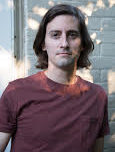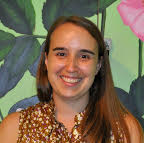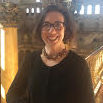WSVP (Write, s’il vous plaît)
I titled my introduction to the December 2017 issue of the Journal of Museum Education (JME) “An Invitation to Write.” The piece shares the process and outcomes of the JME’s spring 2017 open call for articles, our invitation to practitioners to formally share their work in the pages of the journal.
The 2017 call resulted in an overwhelming 48 article proposals of which 10 ultimately were written, edited, peer reviewed, and published in the December issue. Apparently, museum educators want to come to the writing party—they just need an invitation with some constraints to get them started. And so, we’re sending out a new invitation to the field for the December 2018 issue.
Reflecting on and then sharing the value and impact of our work is essential to the field, our institutions, and our own personal growth. But, as I stress in my introduction, writing isn’t easy. If it were, we’d all be doing it. It is, however, important and, in the end, worth it. But you don’t need take my word for it.
I reached out to the authors from the December 2017 issue and asked them to answer some questions about their experience writing for the JME. Andrew, Kathleen, Theresa, and Aliza were all kind enough to share their thoughts on the challenges and rewards of writing for publication:
 ANDREW PALAMARA
ANDREW PALAMARA
Assistant Director of Docent Learning, Cincinnati Art Museum
Article: Practice First: Flipped Training for Gallery Educators + Reader Guide
What inspired/motivated you to write an article to share your work with your museum education colleagues?
I did it out of hopes that I could contribute something positive to the field of museum education. I have learned so much from what my peers and colleagues have written, especially in the JME, and I felt an obligation to return the favor. Also, my program was in progress when I wrote the article, and I thought it would be valuable to write about something that wasn’t a fully-finished project.
What did you find to be the most challenging part of the writing process?
I tend to be very brief in most of my writing, but I found myself easily exceeding the word limit for my article. It was difficult at times to separate the wheat from the chaff with some of my first draft, but the theme of the issue, “Real Challenges, Real Strategies”, and the editors’ suggestions helped me frame the article better.
In writing your article do you learn anything new or unexpected about yourself, your work, life…?
My article begins with an aside about my part-time job as a soccer coach, and I wasn’t sure if that would be useful or relevant; in my experience, I don’t know too many museum educators that are into sports. It ended up being a good way to put museum education in a broader cultural context and a risk worth taking. I learned that it’s important to put my whole self into my work, that it doesn’t always have to be presented in a cut and dried manner.
What piece of advice would you offer to other museum educators embarking on the work of writing an article (or any type of writing for publication)?
Be patient. Good writing rarely ever flows naturally out of the people that are writing it. If you hit a wall with one section, move on to another one. Take the path of least resistance until you have a full draft on your hands. Trust your editors to guide you, too. No one involved in the process wants you to fail, and the criticism you receive only serves to help you make your article better. Also, it’s a privilege to write. Take stock in the fact that you have the opportunity to write and share your perspective with others.
 KATHLEEN HOLKO
KATHLEEN HOLKO
Manager of School and Tour Services, Bruce Museum
Article: Clear Expectations, Communication, and Flexibility: Unlocking the Potential of an Education Department Through a Nontraditional Staffing Structure (with Corinne Flax and Laura Stricker)
What inspired/motivated you to write an article to share your work with your museum education colleagues?
Two things inspired/motivated me to write our article. First, I thought the departmental restructure my colleagues and I participated in was an important story to share with my fellow museum educators. I found that departmental restructure is an event that often happens in the museum field, but is rarely written about or presented on. In addition, I want to add more publications and writing to my personal resume. I think listing published work makes it substantial.
What did you find to be the most challenging part of the writing process?
I found starting our first draft to be a challenging part of the writing process. It was difficult for me to find the right words or first thought to start with. Later on, I thought it was difficult to understand some of the feedback from the reviewers. There were a couple of comments with unclear language or meaning.
In writing your article do you learn anything new or unexpected about yourself, your work, life…?
I wrote my article with my colleagues. We frequently brainstorm activities together, but we rarely write together. I learned a lot about their writing processes.
What piece of advice would you offer to other museum educators embarking on the work of writing an article (or any type of writing for publication)?
I found it helpful when I began writing to start by just jotting down my thoughts on the topic and important information. After I did that, I was able to string together related thoughts and information. The rest of the writing really flowed from there.
 THERESA ESTERLUND
THERESA ESTERLUND
Vice President for Education, National Building Museum
Article: Using Critical Appraisal to Inform Program Improvement (with Amanda Krantz and Catherine Sigmond)
What inspired/motivated you to write an article to share your work with your museum education colleagues?
I’m always eager to share my work but don’t always take the time to do so. I’m so grateful to Amanda and Cathy for reaching out to me to suggest this article as it enabled me to think deeply and differently about my work in many ways. Evaluation is something that many museum educators integrate into their work but may also struggle with – whether due to lack of time, knowledge, or funding. Finding new approaches and understandings through working with Amanda and Cathy was so useful to me, and I hope it will inform and inspire my colleagues as well.
What did you find to be the most challenging part of the writing process?
Just doing it (time management)! Also, because this was about evaluation, it was challenging to consider how best to balance the content with the applications – how to make it meaningful to museum educators’ daily work, rather than a distant hope of a project they might get to “one day.” Another challenge was ensuring that I, as the head of a medium-sized department, was representing our department, rather than just providing my voice. It was challenging to find the best ways to get input and feedback from others throughout the writing process.
In writing your article do you learn anything new or unexpected about yourself, your work, life…?
Yes! I realized that working on the project with Amanda and Cathy (the critical appraisal project) was actually a bigger learning experience than I’d realized at the time! The questions posed by the reviewers and that I was challenged to consider throughout the writing shed new light on how enriching, informative, and impactful that experience was. I also learned that I could and should be submitting to journals and such more often. I learned that the article gives me a different opportunity and way to share evaluation with museum colleagues (non-educators) – I’m excited to learn more from that as I try out using the article to begin new conversations in my place of work.
What piece of advice would you offer to other museum educators embarking on the work of writing an article (or any type of writing for publication)?
- Write with people you respect and work well with – a team approach is wonderful!
- Ask your peers what would be meaningful to them before or during your writing – this will help you help you get ahead of the peer reviewer questions but, more importantly, it will help you sharpen the writing to make the article more useful.
- Document your process (I didn’t do that!) – it’s so helpful next time you write something to know the steps you took, what worked and what didn’t, how to best manage your time, etc.
 ALIZA GREENBERG
ALIZA GREENBERG
Museum Educator / Museum Access Consortium
Article: Supporting Transitions: Cultural Connections for Adults with Autism Spectrum Disorders (with Sheri Levinsky-Raskin)
What inspired/motivated you to write an article to share your work with your museum education colleagues?
In my work, I was seeing both high quality work serving adults with developmental disabilities but also a relatively low number of museums doing work in this area. I wanted to highlight the exemplary work that I was seeing and also issue a call to action for other museums to begin to develop ways to engage this population. I also have the privilege of working with Museum Access Consortium on the Supporting Transitions project and we wanted to share this project with a larger audience in hopes of furthering the mission of the project to support more museums in developing initiatives for adults with developmental disabilities.
What did you find to be the most challenging part of the writing process?
There is little research available on adults with autism, particularly arts participation among adults with autism. It was challenging to provide supporting literature in this area as it is a very new field.
In writing your article do you learn anything new or unexpected about yourself, your work, life…?
It was a great process to distill the work we have been doing into an article. It helped me communicate the project clearly and has already been wonderful to share with colleagues. It is very helpful to place the work in a broader context and conversation.
What piece of advice would you offer to other museum educators embarking on the work of writing an article (or any type of writing for publication)?
Explore where your work fits in a larger picture. What other sectors does your work touch and what does research in that sector bring to bear on your work? How can you bring in as many perspectives on the topic as possible?
Inspired? Ready to get those thoughts and ideas out of your head and onto paper (or word processor)? Accept our invitation: check out the JME’s latest call for article proposals on 21st Century museum teaching techniques. Proposals are due by February 12th. Beyond the call, we accept proposals to guest edit themed sections on a rolling basis as well as single submission articles. Follow the link above and scroll down the page to learn more.
Happy writing!
Elisabeth Nevins is a museum education, interpretation, and evaluation consultant based in Boston, Massachusetts. She collaborates with leaders at museums and historic sites throughout the Northeast to create empowering and engaging learning experiences with their visitors. She is particularly intrigued by the possibilities of placemaking and place-based learning. She serves as the publications strategist for Museum Education Roundtable and as a reviewer and cover photo editor for the Journal of Museum Education. Find her on Twitter at @seededucation.
Opening image: “notebook” by derya, via Flickr. Headshots provided by the individual contributors.

